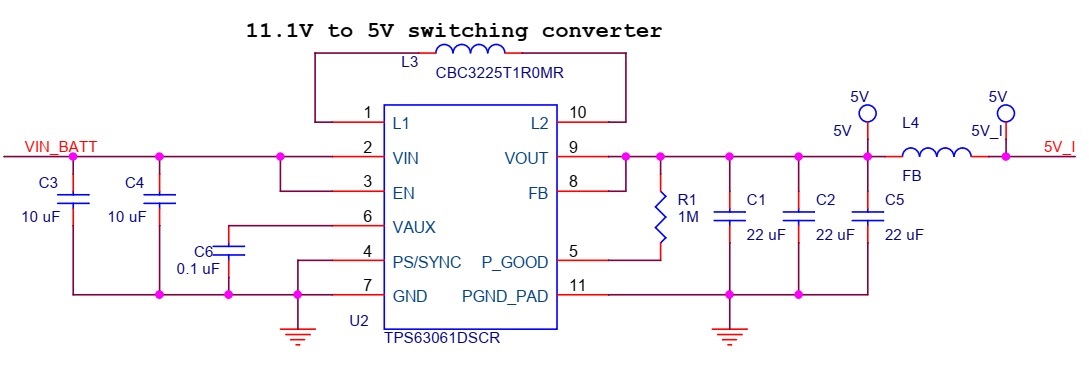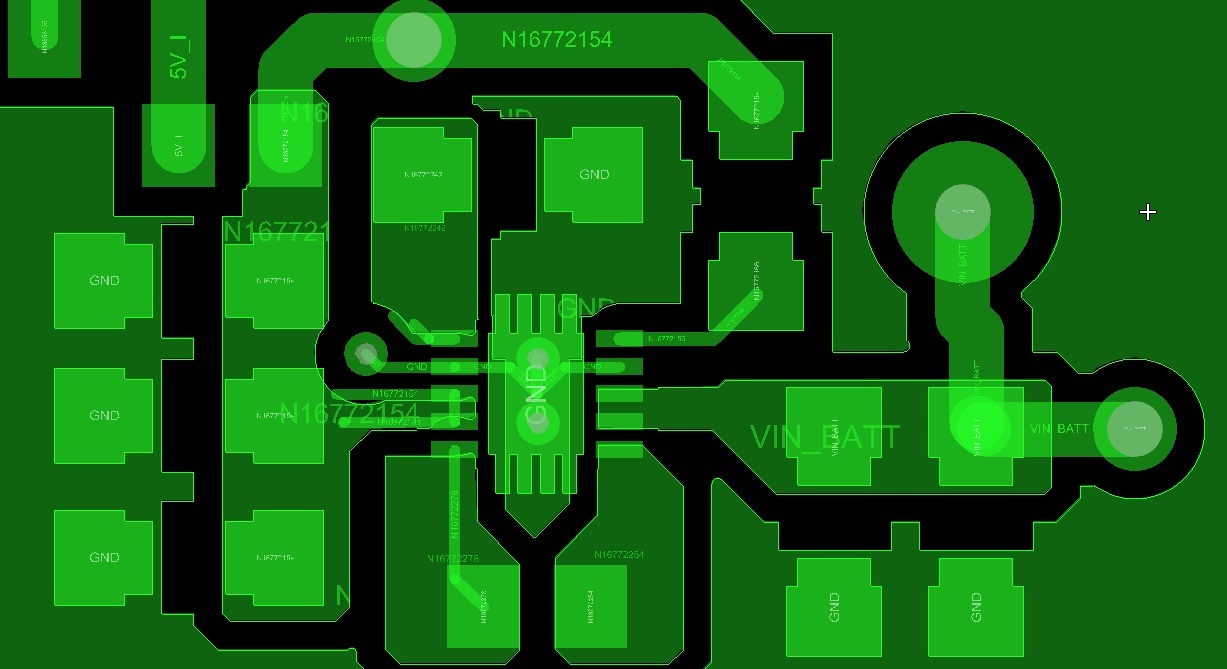Other Parts Discussed in Thread: TPS63060, TPS63070, , TPS62143
Hi!
I used TPS63061 in my board to give 5V fixed output. Input is from a Li-ion battery rated at 11.1V. At lab, I test using a DC adapter with output 13.3V.
The 5V output from TPS63061 goes to TPS79633 and the 3.3V from it powers the rest of my board's circuitry including a microcontroller.
So, my input to the TPS63061 is 13.3V. It worked fine and I reprogrammed the microcontroller on board a few times.
I have a Power ON LED driven by 3.3V to indicate the board status.
Suddenly, when I turned OFF the DC adapter and turned it ON later, the Power ON LED on my board blinks for a sec and then goes OFF.
Then, the adapter voltage is 13.3V at the input of TPS63061 and the output from TPS63061 is around 0.5V. As a result, the rest of the circuitry is OFF.
There is no short between GND and 5V as well as GND and 3.3V. Also, there is no short between VIN-GND, VOUT-GND, L1 -GND and L2-GND.
I have an option to bypass TPS63061 in my board and provide the 5V externally. When I power the board with 5V externally, the board works fine and the current drawn is around 45 mA.
The schematic and the layout of the regulator portion of the board is as given below.
I hereby request for the experts in the concerned domain to help me resolve the issue.
Best Regards,
Raghavan




